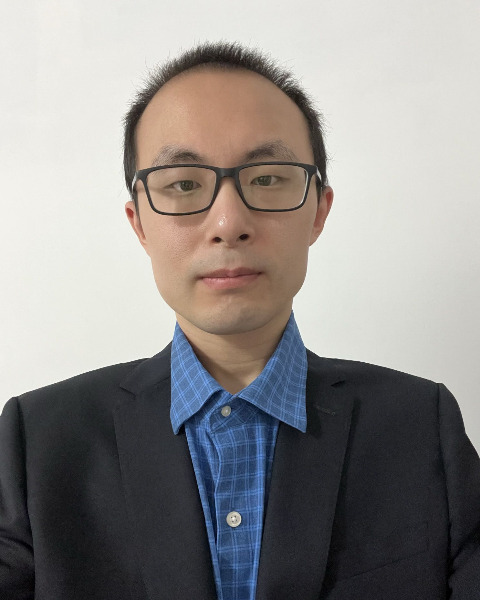Biomechanics
Mechanotransduction Under Applied Forces
Mechanical stretch induced collective cell alignment
Thursday, October 9, 2025
4:00 PM - 4:15 PM PDT
Location: Room 31B

Xuechen Shi
Postdoctoral Fellow
University of Pennsylvania, United States
Xuechen Shi
Postdoctoral Fellow
University of Pennsylvania, United States- SZ
Sulin Zhang
Pennsylvania State University, United States
Presenting Author(s)
Primary Investigator(s)
Last Author(s)
Introduction: : Cell alignment is essential for tissue morphogenesis across diverse biological systems. For example, in muscle development, myoblasts align to form multinucleated myotubes. Endothelial cells align with blood flow to maintain vascular integrity. Similarly, fibroblasts align along fibrils during tendon and ligament repair, promoting matrix remodeling and healing. These examples underscore the biological significance of alignment and have spurred in vitro efforts to replicate such behavior. Although various molecular and mechanical factors have been linked to alignment, the mechanisms enabling coordinated alignment within multicellular collectives remain poorly understood.
Recent findings suggest that cell density plays a crucial role in regulating collective behavior: dense cell populations exhibit heightened sensitivity to subtle cues, allowing them to respond to weak chemical and mechanical gradients through collective chemotaxis and durotaxis, where isolated cells cannot sense and respond to those weak gradients. Yet, the mechanisms by which density-dependent cell-cell interactions mediate large-scale alignment and structural order remain to be elucidated.
Here we show that uniaxial mechanical stretch induces density-dependent cell alignment through a two-phase process: passive deformation followed by active, adhesion-driven organization. Dense cultures sustain alignment via cooperative interactions and kinetic trapping, while sparse cultures lose order. These findings reveal how mechanical forces and cell-cell adhesion guide collective organization.
Materials and
Methods: : Mouse skeletal myoblasts (C2C12) were cultured in DMEM supplemented with 10% fetal bovine serum and 1% penicillin-streptomycin, maintained at 37°C with 5% CO₂. Cells from passages 10–13 were used. For orientation analysis, nuclei were stained with Hoechst 33342. Cells were seeded on fibronectin-coated PDMS membranes mounted on a custom uniaxial stretcher, allowing precise application of mechanical strain via a digital controller. The PDMS substrates were incubated with 0.05 mg/ml fibronectin at 37°C for 30 minutes to promote adhesion. Stretching was applied along the y-axis (θ = 90°) and transmitted to cells through substrate coupling. Cell orientation was quantified using the outline-etching method, which estimates nuclear angles to calculate an alignment index (AI), defined as: AI = (1/N) Σ [2cos²(θᵢ − 90°) − 1], where θᵢ is the angle of the ith cell and N is the number of cells. AI = 1 indicates full alignment with stretch, 0 denotes random orientation, and −1 indicates perpendicular alignment. To assess deformation coupling, PDMS membranes were labeled with fluorescent beads. The deformation ratio, defined as cell deformation relative to substrate deformation, was calculated to evaluate mechanical coupling, with a ratio of 1 indicating full adherence and deformation matching.
Results, Conclusions, and Discussions:: We first observe the collective cell alignment under static uniaxial mechanical stretches. At near-confluent density, cells do not align without stretch but align robustly after stretch, while sparse cultures do not maintain alignment (Fig. 1A-C). Kinetically, both cultures show short-term alignment immediately after stretch, but only high-density cultures retain alignment 24 hours later (Fig. 1D). Additionally, cell alignment increases with density until saturating, then declines slightly (Fig. 1E), and also scales with cumulative stretch magnitude (Fig. 1F).
To probe the alignment mechanism, we first exclude substrate remodeling by pre-stretching prior to fibronectin coating (Fig. 1G). We also find no evidence of active reorientation: cells do not change orientation over hours post-stretch (Fig. 1H), and traction force does not change upon stretch (Fig. 1I).
Instead, we find that short-term cell alignment arises from passive mechanical coupling: during uniaxial stretch, cells deform with the substrate, transiently aligning their orientations. Fluorescent bead tracking confirms near-complete coupling, with deformation ratios close to 1 in both stretch and compression directions (Fig. 2A-C). Computationally scaled pre-stretch images match post-stretch cell orientations (Fig. 2D-F), indicating that substrate deformation alone can drive global, passive alignment. These results demonstrate that short-term alignment arises from passive deformation: cells transiently mirror substrate strain generated by the stretch.
We further demonstrate that the divergence in long-term alignment reflects collective effects. Sparse cultures lose initial alignment, while in dense cultures, cells progressively realign with neighbors (Fig. 3A-B). Cells initially misaligned in the stretch-perpendicular direction can reorient over time only if adjacent to aligned cells (Fig. 3C); otherwise, they remain disordered (Fig. 3D). Secondary seeding experiments further confirm that unaligned cells can realign by interacting with pre-aligned neighbors, independent of direct stretch exposure (Fig. 3E-H).
In conclusion, we show that uniaxial stretch induces collective cell alignment through a two-phase mechanism: passive deformation and active, adhesion-mediated organization. We propose that the alignment emerges as an interplay among thermodynamic stabilization (adhesion-driven order), active reorientation (neighbor-guided alignment), and kinetic trapping (force-limited reorientation). Our findings reveal universal cooperative mechanisms guiding cell organization and offer a novel method to align cells for muscle tissue engineering.
Acknowledgements and/or References (Optional)::
